Background
This post will turn into an interactive dedicated web page in the future. there are huge list of notes and references that I have collected through the years. It is a huge mess, so I
1940s
A Brief History of the RAND Corporation
Lindsay Caplan mentions about RAND as it is one of the first constitutions that is fostering computer arts.
1940-1950s
Emergence of Computers in the History
The computer industry is relatively young in age when compared to most other industries. Measured from the date of the first computer installation in 1951, the industry is a little more than a decade old. The more significant date when discussing the industry’s development would be the 1953-1954 period, when mass production techniques were applied to computer manufacture, and commercial electronic computers started to be produced on a large scale. Bell Labs and RAND Corporation started work on how they can utilize computers to create artistic works.
Generative Practice. The State Of The Art • Digicult | Digital Art, Design and Culture
1950
Boeing Company Coined the Term “Computer Graphics”
The first commercial computer was marketed in 1950. Ten years later the Boeing airplane company coined the term computer graphics. They used graphics for purely utilitarian purposes. These were employed, for instance, to verify the landing accuracy of a plane viewed from the pilot’s seat and the runway. They were used to establish the interaction of range of movements of the pilot in his environment of the cockpit. To this end they created a 50 percentile pilot and studied him in animation. All the drawings and the animation were done with a computer. Other experiments included visualizing acoustic graphs in perspective and the production of very accurate isometric views of aeroplanes.
source (This article was first published in Studio International, Vol 173, No 889, May 1967, pages 222-223.)
Computers and Automation
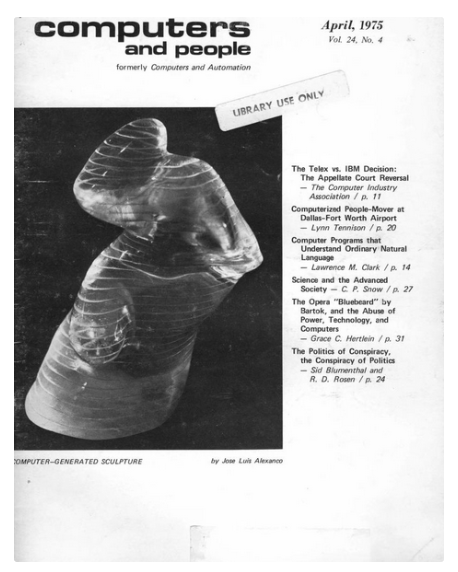 One of the earliest publications related to computational devices. Computers and Automation was the first magazine focused around digital technology. Published by Edmund C. Berkeley since 1950. Computers and Automation was the first computer magazine. It was originally called Roster of Organizations in the Field of Automatic Computing Machinery, and later The Computing Machinery Field. This publication initiated the first Computer Art Contest since 1963. A regular bibliography on computer art was compiled by Mezei, Leslie since 1966. Stopped publishing in 1972. This publication initiated the first Computer Art Contest in 1963. José Luis Alexanco‘s computer generated sculptural work is featured on the cover of the April 1975 edition.
One of the earliest publications related to computational devices. Computers and Automation was the first magazine focused around digital technology. Published by Edmund C. Berkeley since 1950. Computers and Automation was the first computer magazine. It was originally called Roster of Organizations in the Field of Automatic Computing Machinery, and later The Computing Machinery Field. This publication initiated the first Computer Art Contest since 1963. A regular bibliography on computer art was compiled by Mezei, Leslie since 1966. Stopped publishing in 1972. This publication initiated the first Computer Art Contest in 1963. José Luis Alexanco‘s computer generated sculptural work is featured on the cover of the April 1975 edition.
1960
Customized Drawing Machine by Desmond Paul Henry
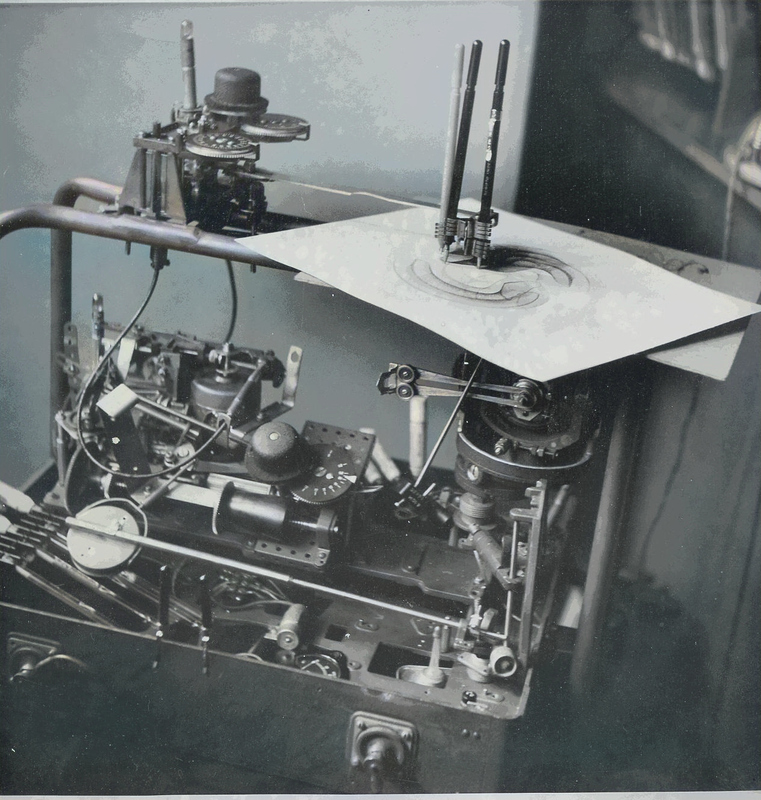 Desmond Paul Henry created his first electromechanical Henry Drawing Machine in 1961, using an adapted analogue Bombsight Computer. His work was shown at the Reid Gallery in London in 1962, after his machine-generated art won him the privilege of a one-man exhibition.
Desmond Paul Henry created his first electromechanical Henry Drawing Machine in 1961, using an adapted analogue Bombsight Computer. His work was shown at the Reid Gallery in London in 1962, after his machine-generated art won him the privilege of a one-man exhibition.
1963
One of the first Computer Art Contest
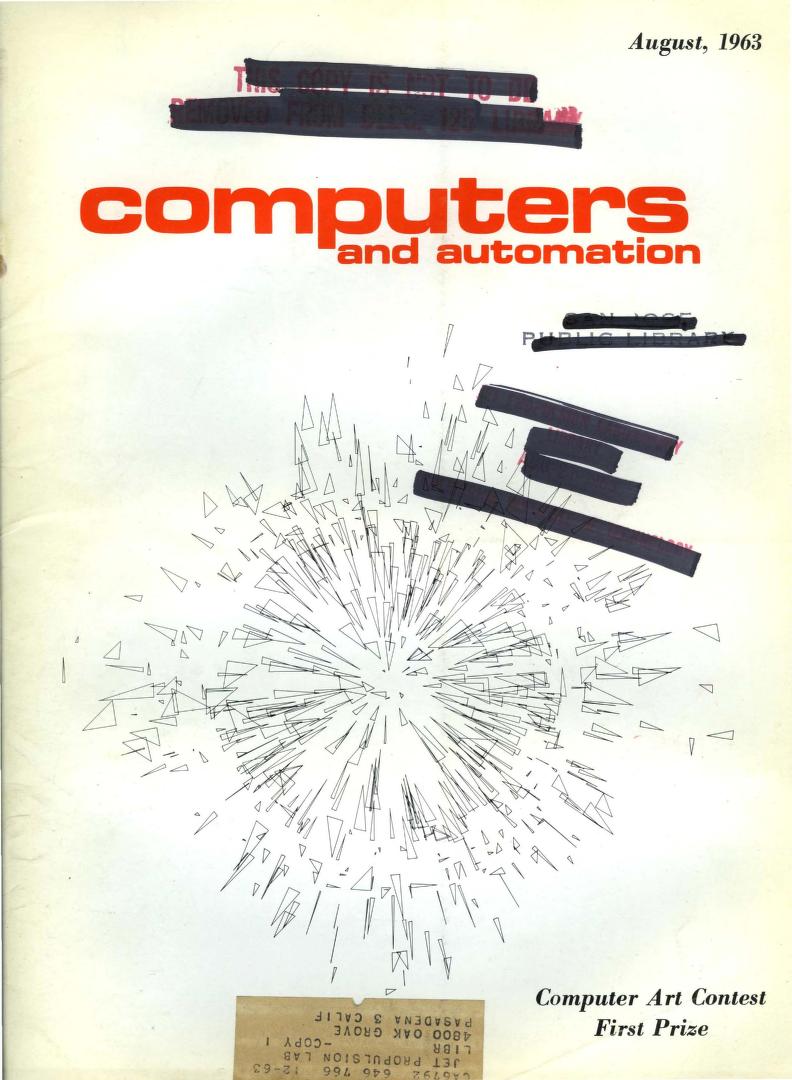 In 1963 two years before anything called computer art appeared in galleries the trade journal. Computers and Automation Magazine held its first Computer Art Contest.
In 1963 two years before anything called computer art appeared in galleries the trade journal. Computers and Automation Magazine held its first Computer Art Contest.
1962
BEFLIX programming language at Bell Labs
BEFLIX is the name of the first embedded domain-specific language for computer animation, invented by Ken Knowlton at Bell Labs in 1963. Frank W. Sinden, Edward E. Zajac, Ken Knowlton, and A. Michael Noll made computer-animated movies during the early to mid-1960s. Ken Knowlton invented the computer animation language BEFLIX. The first digital computer art was created in 1962 by Noll.
1965
The Projects of Generative Aesthetics
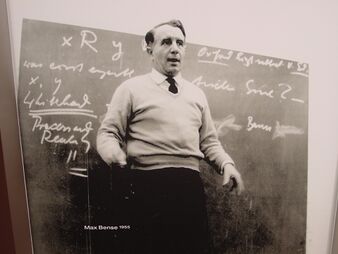 Max Bense published “The Projects of Generative Aesthetics.” Originally published in Bense’s journal Rot 19, in 1965.
Max Bense published “The Projects of Generative Aesthetics.” Originally published in Bense’s journal Rot 19, in 1965.
1968
Compos 68
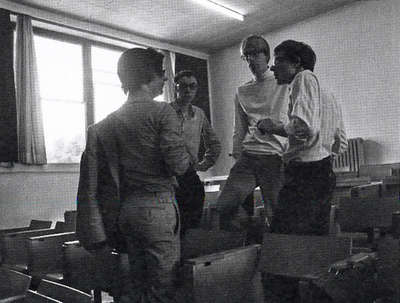 Compos 68 was founded in September 1968 in Utrecht by Jan Baptist Bedaux, Jeroen Clausman, and Arthur Veen to work on the connection between art and computer. In its short existence as a group (1968-1969), Compos 68 showed their work at several important international exhibitions of computer-generated art, such as tendencies 4 in Zagreb (1969, receiving an award for Hobby Box), Kunst und Computer in Vienna.
Compos 68 was founded in September 1968 in Utrecht by Jan Baptist Bedaux, Jeroen Clausman, and Arthur Veen to work on the connection between art and computer. In its short existence as a group (1968-1969), Compos 68 showed their work at several important international exhibitions of computer-generated art, such as tendencies 4 in Zagreb (1969, receiving an award for Hobby Box), Kunst und Computer in Vienna.
1968
Cybernetic Serendipity Exhibition
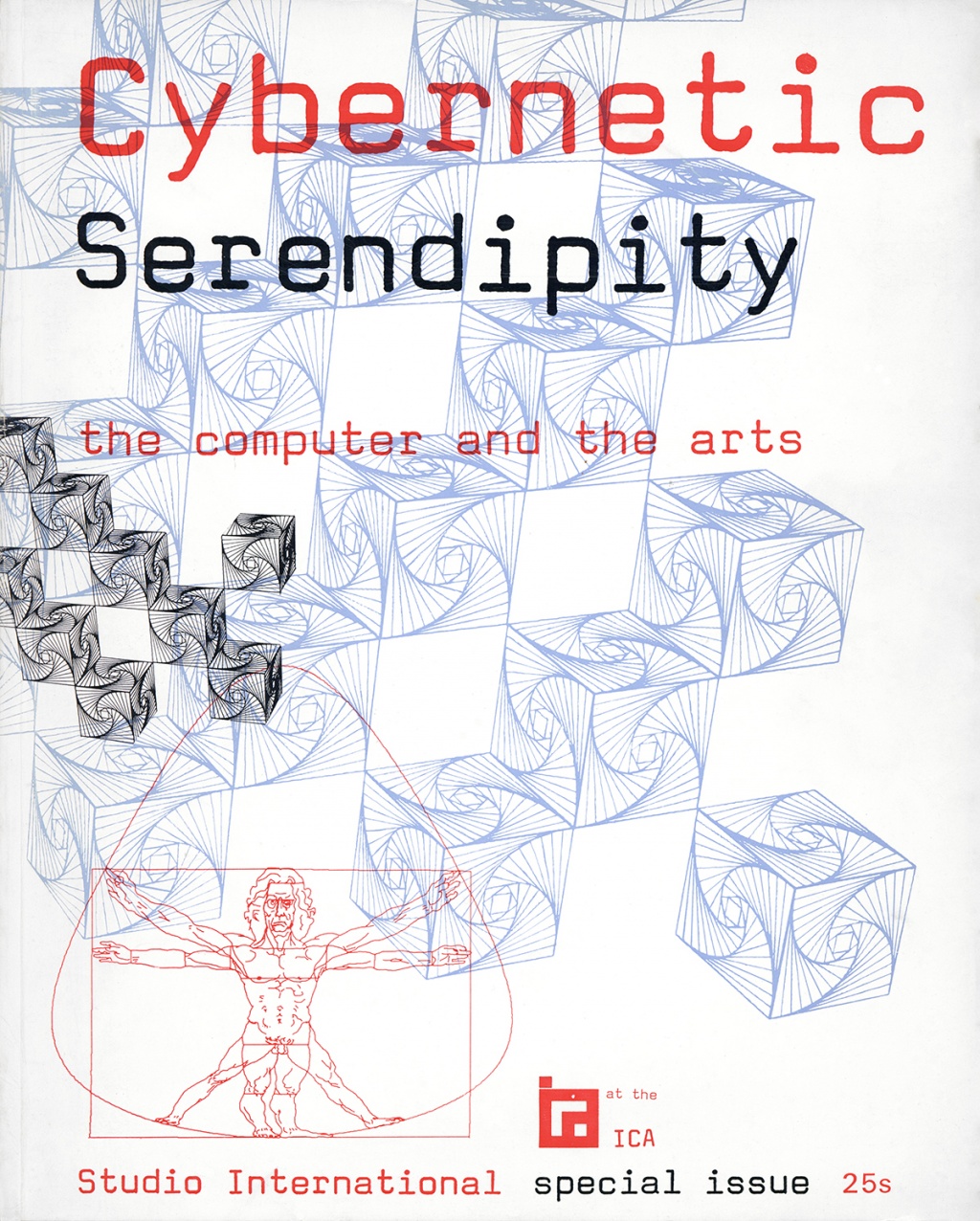 In Great Britain, computer art became established following the Cybernetic Serendipityexhibition shown in the Institute of Contemporary Arts, curated by Jasia Reichardt in 1968.
In Great Britain, computer art became established following the Cybernetic Serendipityexhibition shown in the Institute of Contemporary Arts, curated by Jasia Reichardt in 1968.
1968
Computer Arts Society Founded
The Computer Arts Society was formed by Alan Sutcliffe, John Lansdown, and George Mallen in London, UK to promote the creative potential of computers in art.
source, [source-2](Creative Simulations by Catherine Mason)
1968
Fundamental Studies in Cybernetics and the Humanities
Scientific Journal, Grundlagenstudien aus Kybernetik und Geisteswissenschaft (Fundamental Studies in Cybernetics and the Humanities) founded by Max Bense, Gotthard Grünther, Abraham A. Moles.
1969
One of the first PHD on computer art
Georg Nees published the first doctoral dissertation on computer art.
1973
Special Interest Group on Computer Graphics (SIGGRAPH)
In 1973, the inaugural SIGGRAPH conference was held in Boulder, Colorado. SIGGRAPH would become a major exposition and trade show for graphics research and, significantly, a crucial popularizer of computer art, especially in the 1980s when an exhibition component was added to the annual conference.
1975
Computers and People
By 1975, Computers and People (formerly Computers and Automation) featured the work of 41 artists from 11 countries in its annual exposition.
1976
Computers Graphics & Art Magazine
Computer Graphics & Art was a quarterly publication focused on computer graphics and computer artists. It was produced in Chico, CA and published by Berkeley Enterprises Inc. The magazine ran for 3 years and published 12 issues from 1976 to 1978. It aimed at students, teachers, researchers, and professionals in the field of graphics. The magazine was informative, useful and entertaining, covering a broad range of topics.
1976
Book: Artist and Computer
The book collects several artists of its time.
1979
Ridley Scott’s Alien: Control Panel Graphics
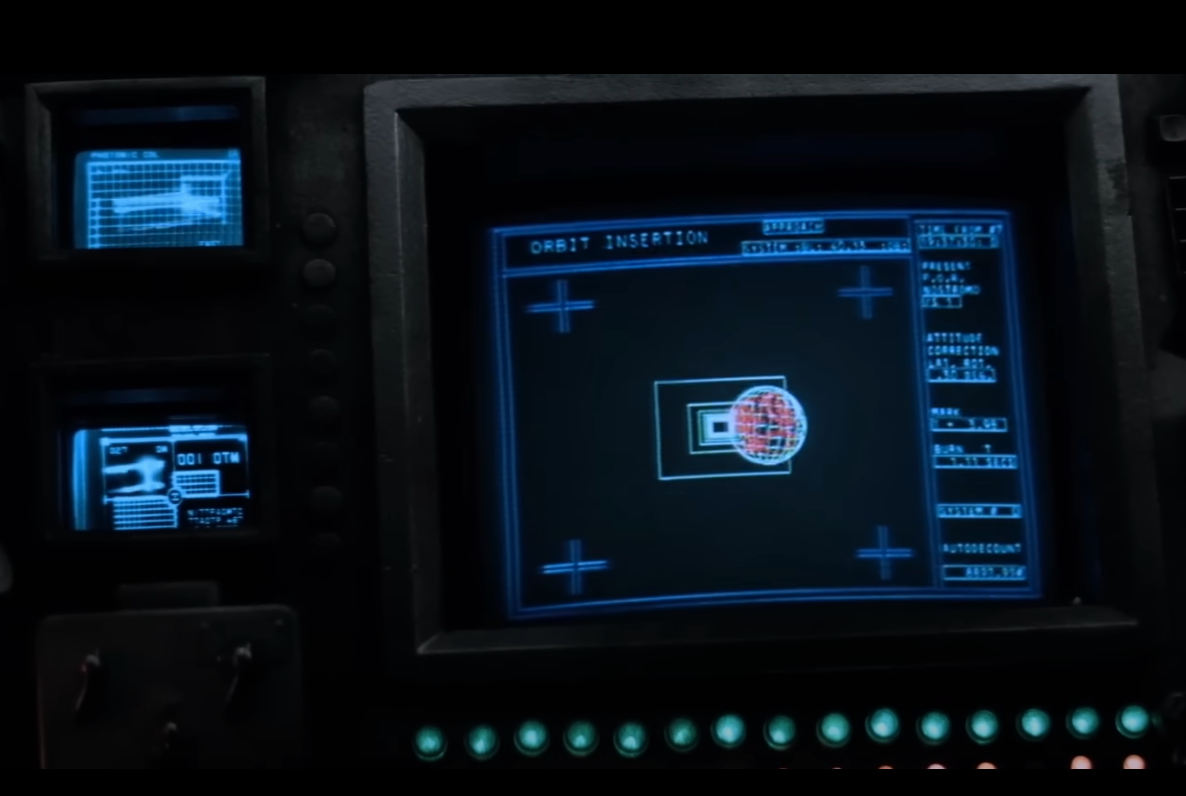 George Mallen’s company System Simulation Ltd. produced the control panel graphics for the Nostromo spaceship in the movie.
George Mallen’s company System Simulation Ltd. produced the control panel graphics for the Nostromo spaceship in the movie.
Creative Simulations by Catherine Mason